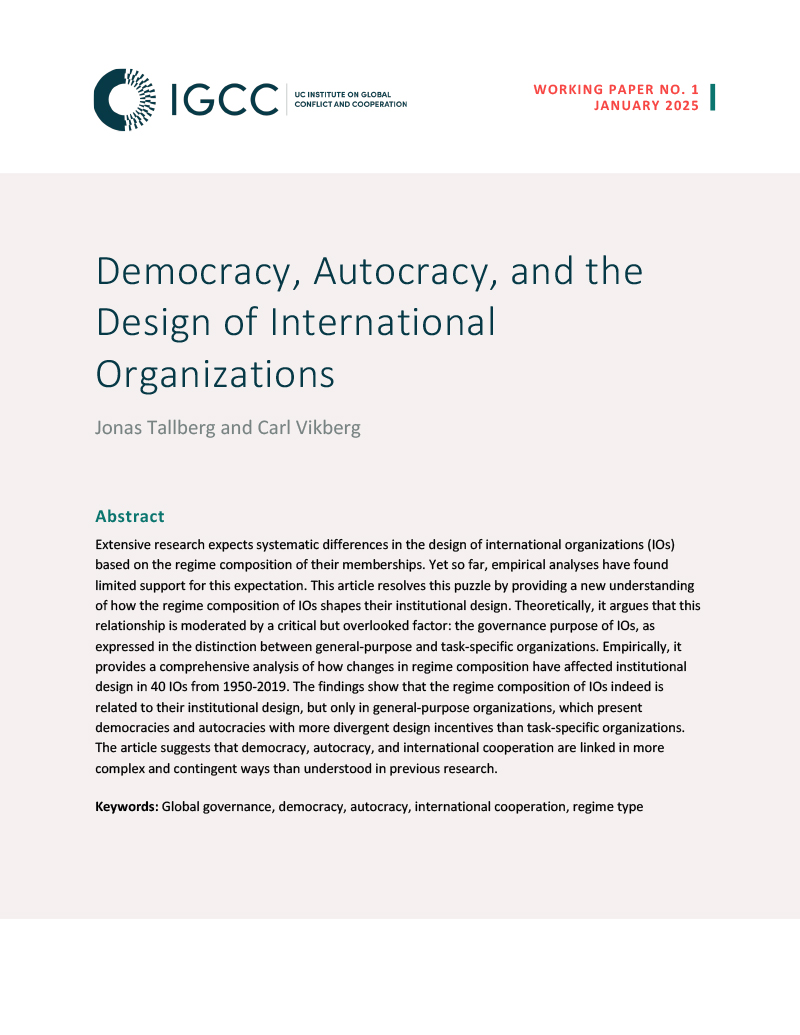Democracy, Autocracy, and the Design of International Organizations

In this working paper, authors Jonas Tallberg and Carl Vikberg provide a new understanding of how the institutional design of international organizations (IOs) is shaped by the regime composition of their memberships. Their findings show that regime composition of IOs indeed is related to their institutional design, but only in general-purpose organizations, which present democracies and autocracies with more divergent design incentives than task-specific organizations.
DownloadExtensive research expects systematic differences in the design of international organizations (IOs) based on the regime composition of their memberships. Yet so far, empirical analyses have found limited support for this expectation. In this working paper, authors Jonas Tallberg and Carl Vikberg of Stockholm University resolve this puzzle by providing a new understanding of how the regime composition of IOs shapes their institutional design. Theoretically, they argue that this relationship is moderated by a critical but overlooked factor: the governance purpose of IOs, as expressed in the distinction between general-purpose and task-specific organizations. Empirically, this working paper provides a comprehensive analysis of how changes in regime composition have affected institutional design in 40 IOs from 1950-2019. The findings show that the regime composition of IOs indeed is related to their institutional design, but only in general-purpose organizations, which present democracies and autocracies with more divergent design incentives than task-specific organizations. The article suggests that democracy, autocracy, and international cooperation are linked in more complex and contingent ways than understood in previous research.
Thumbnail credit: International Labour Organization ILO (Flickr)